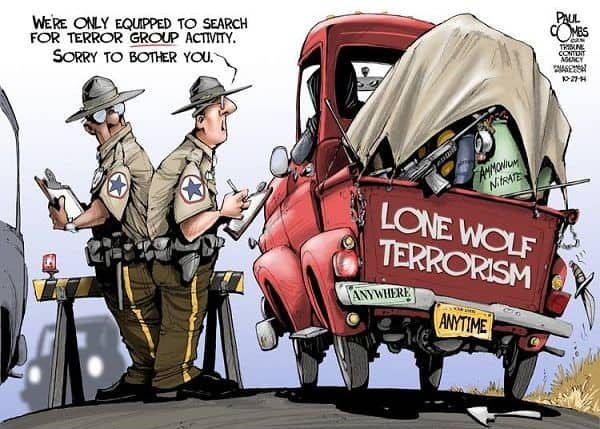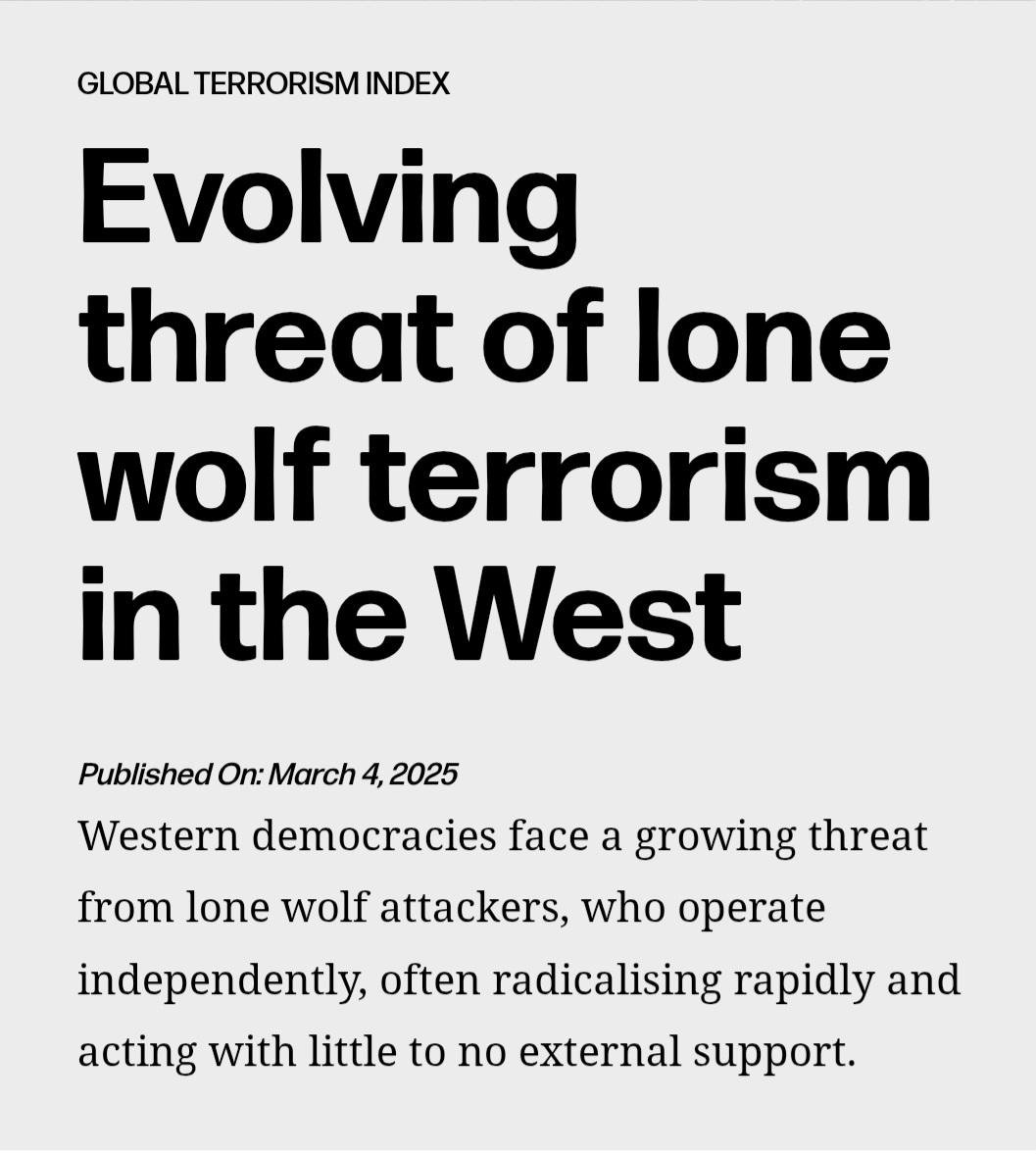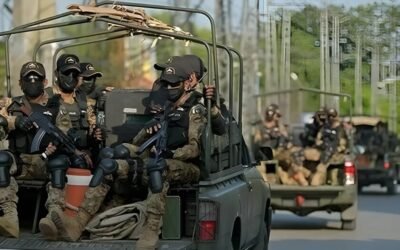Lone-wolf attacks are a result of extremist ideologies. While they are less common than group-led attacks, they are no less dangerous. They also present a unique and growing challenge to Pakistan’s urban security landscape. Lone-wolf terrorism is particularly difficult to prevent due to its decentralized nature. Increasing digital radicalization is also to blame. This article looks at the threat this form of terrorism poses to Pakistani cities.
What is Lone-wolf Terrorism?
Lone-wolf terrorism refers to acts of terror committed independently. That is to say, they are not linked to any terror or extremist organizations. Because of their solitary actions, they pose a significant challenge to law enforcement. Lone wolves are even capable of escaping traditional intelligence methods. These individuals can be personally motivated or radically inclined. However, their ideological dispositions are not due to affiliations with extremist organizations. Their modus operandi includes improvised explosive devices or firearms. These are often created before the terror attack, making them difficult to detect. Such weaponry is often constructed through everyday materials such as fertilizers. Therefore, there is often no way to predict attacks.

Source: Burgett.LLC
Mostly, lone wolves are captured after they express their grievances through the media. Often, they are threatening future attacks. Sometimes suspects were captured by chance, such as being caught on a security camera or noticed by a passerby. In some cases, their goal is to join a larger extremist group through their actions. Such expressions have been discovered on Internet chat groups or in private notebooks examined by authorities. Offenses by these individuals include attacking individual leaders, harming companies, or targeting symbols. They also express a desire to establish a new social system.
You May Like To Read: Protecting Your Identity: FIA’s New Anti-Theft Apps Secure Citizens Online
Lone-Wolf Terrorism in the West

Source: Politico
There are more instances of lone-wolf terrorism in America and Europe than in Pakistan. At least 93% of fatal incidents in America were lone-wolf in nature. The growing convergence of online propaganda, youth alienation, and technological ease makes the lone‑wolf model increasingly appealing to extremists. One such incident is Michael Finton. He was arrested in 2007 for violating parole. Police investigation had found that he had written to Islamic jihadist groups outside of the USA with an interest in joining. An FBI agent tailed him from 2009 undercover. Finton was taken into custody on 23rd September, 2009. He had parked a car he thought was packed with explosives near the federal office building in Springfield. He dialed the cellphone trigger that he held on to. The explosives were fake and did not ignite. Finton never made contact with an external group. The fake explosives and phone were also a decoy provided by the FBI to monitor his actions. He was formally charged with attempting to detonate a weapon to cause mass destruction.

Source: Vision of Humanity
In the West, such attacks are not isolated events. But perhaps, worldwide, people are more familiar with shooting incidents or gun violence. These attackers are termed active shooters. They mainly use guns to cause mass casualties. Although not technically lone wolves, they have caused significantly more deaths than the latter. These killers were, almost without exception, native-born Americans. They also employed legally obtained weapons and ammunition. This also makes it harder to detect such incidents beforehand.
You May Like To Read: Banned Clerics and Bolder Platforms: Can We Really Silence Extremism Online?
Lone-Wolf Terrorism in Pakistan
Lone-wolf attacks are less common in Pakistan. In most cases, terrorist incidents are a result of coordinated group effort from extremists. Nevertheless, there are a few notable examples. On 30th January 2023, a suicide bombing was carried out in a mosque in Peshawar. The mosque was located inside a police line. The bomber had disguised himself as a police officer and infiltrated the Zuhr congregation. There, he detonated the bomb, killing 84 people. An additional 217 were injured. The attacker was an Afghan national who identified as “Qari”.
Initially, Jamaat-ul-Ahraar took responsibility for the attack. They are a faction of Fitna-al-Khawarij (FAK). However, they later retracted their statement and denied involvement. According to them, they said it was against their policy to attack mosques. Jamaat-ul-Ahraar may have sponsored and taken advantage of Qari despite not having any affiliation with him. Since Qari died during the attack, his motivations are unknown. But since there is no official support from any terrorist groups, this incident can be seen as a lone-wolf attack.
A facet of lone-wolf attacks in Pakistan is that of punishment for perceived blasphemy. In 2011, Mumtaz Qadri killed politician Salman Taseer. He was a bodyguard of the politician and therefore had the opportunity to attack. Qadri was an elite commando and had been assigned to Mr. Taseer for his protection. Doing the very opposite of his duty, he shot the politician in an Islamabad market.
The reason he gave for this assassination was that Mr. Taseer was too outspoken against the harsh blasphemy laws in the country. He claimed that it was his religious duty to kill him. Qadri showed no remorse over his actions and was lauded by extremist Islamist groups. He was executed later that year. Most lone-wolf attacks in Pakistan are similar. With rising radicalism, blasphemy charges and subsequent attacks are becoming more common. Qadri, although radically motivated, was not affiliated with any religious terrorist group. Considering that both attacks mentioned here were carried out in urban areas is cause for alarm.
Root Causes: Drivers of Lone‑Wolf Radicalization
- One of the reasons behind lone wolves is digital radicalization. Online propaganda fuels ideological grievances and exploits psychological vulnerabilities. It incites mentally weak individuals towards violence.
- Groups like FAK sometimes encourage lone wolves to act under ideological or material guidance. By doing so, they blur the lines between independent and directed actions.
- Weapons, drones, and online schematics are increasingly accessible. This enables individuals to plan attacks with minimal external logistics.
Conclusion
Lone-wolf attacks in Pakistani cities are a serious and growing danger. Some are driven by online radicalization or blasphemy-related violence. Individuals often act out based on personal or extreme beliefs. These attacks often involve unusual weapons or mental health issues. Since they are not affiliated with larger groups, they are hard to predict. Because of this, Pakistan needs many different responses. These include using better technology to monitor threats and promoting mental health support. For blasphemy-related violence, it’s also important to spread awareness, teach tolerance. It is necessary to protect legal processes from being misused. By taking these steps, Pakistan’s security forces and society can better guard cities. They will also be better able to protect against the hidden threats of lone-wolf violence.
You May Like To Read: Radicalization in Prisons in Pakistan: An Overview







